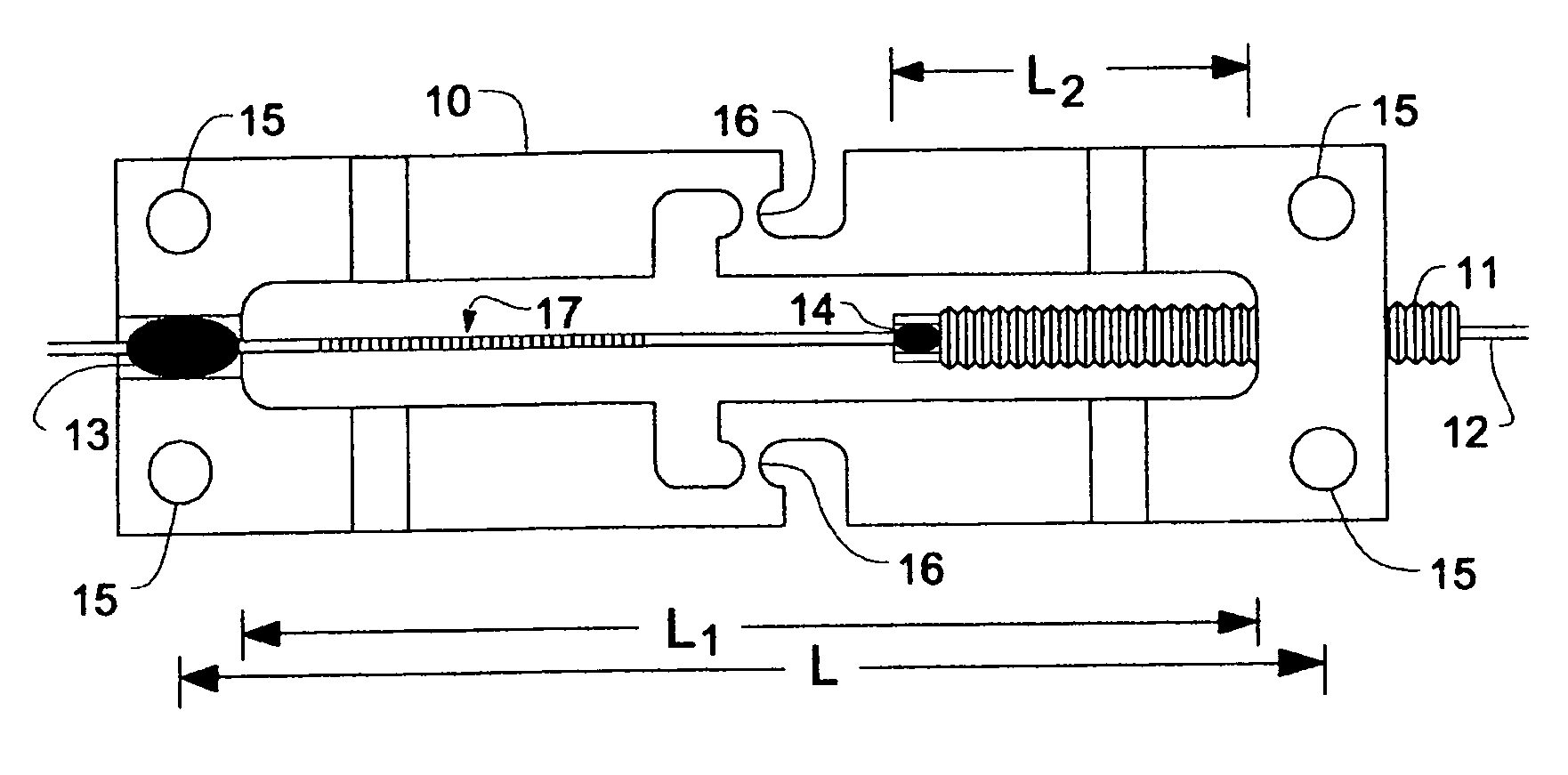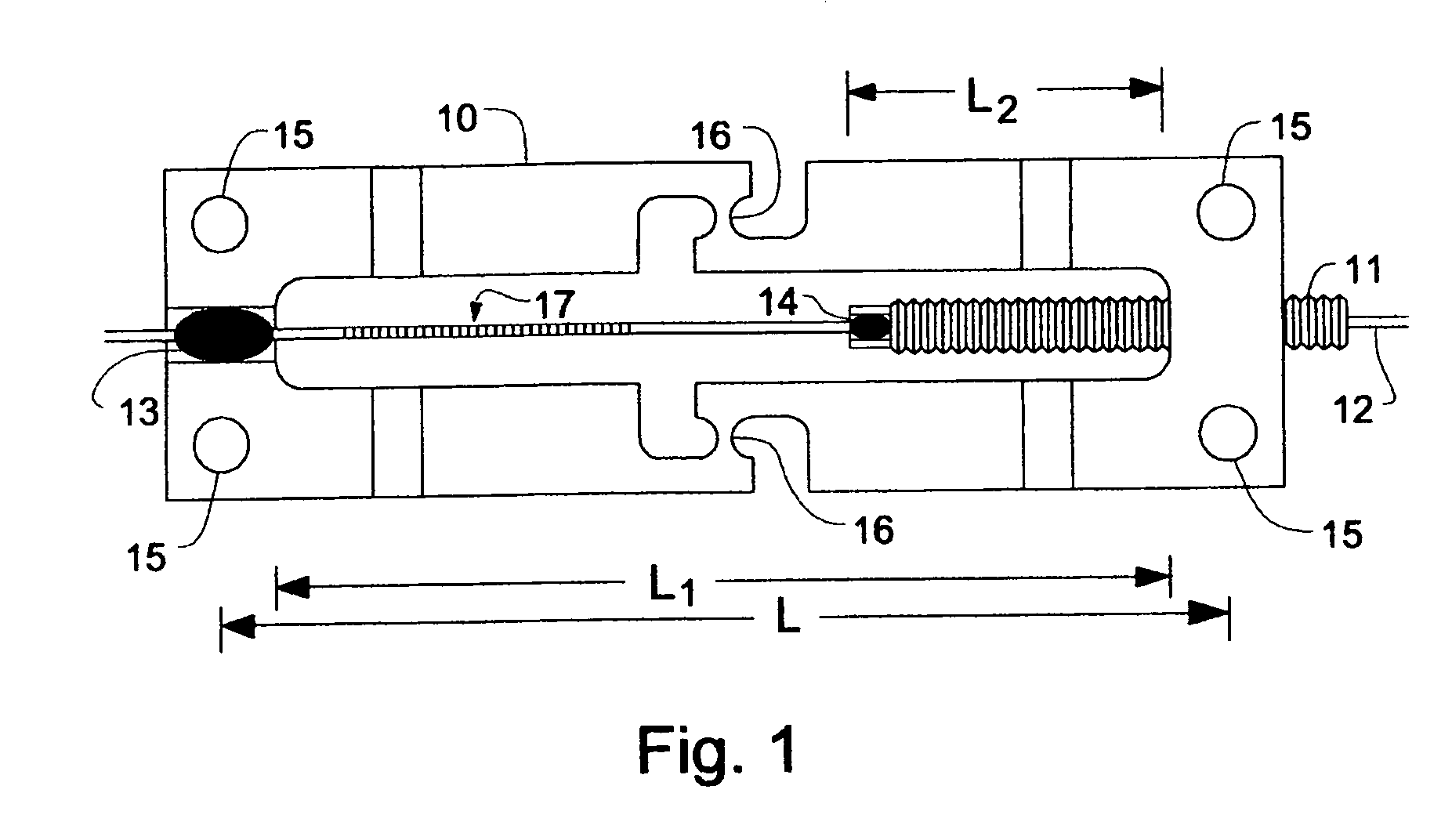Passive athermal fiber bragg grating strain gage
a technology of athermal fiber bragg grating and strain gage, which is applied in the field of optical fiber sensors, can solve the problems of limiting the total number of sensors in a given sensing network, restricting the adjustment of fbg sensitivity to the set of discrete values, and too complex and difficult to implement in real world structures, so as to improve the positive temperature sensitivity and reduce the negative temperature sensitivity
- Summary
- Abstract
- Description
- Claims
- Application Information
AI Technical Summary
Benefits of technology
Problems solved by technology
Method used
Image
Examples
Embodiment Construction
[0018]FIGS. 1 and 2 are plan and isometric views of a preferred embodiment of an athermal FBG strain gage according to the present invention. Other embodiments and variations are within the scope of the invention as claimed.
[0019]An athermal FBG strain gage according to the present invention has a frame 10, a pointer 11, an optical fiber 12, fiber-to-frame engagement means 13, and fiber-to-pointer engagement means 14. The fiber-to-frame engagement means 13 and fiber-to-pointer engagement means 14 are adhesives, such as epoxies; alternatively, other means known in the art for fixing optical fibers to supporting structures may be used. Means for fixing the frame to a structural element to be monitored are also provided. In the preferred embodiment, fixing holes 15 which accommodate fasteners such as rivets, bolts, or screws are the means used to attach the strain gage frame to the structure being monitored. Alternatively, other fastening means such as welding may be employed. The fram...
PUM
 Login to View More
Login to View More Abstract
Description
Claims
Application Information
 Login to View More
Login to View More - R&D
- Intellectual Property
- Life Sciences
- Materials
- Tech Scout
- Unparalleled Data Quality
- Higher Quality Content
- 60% Fewer Hallucinations
Browse by: Latest US Patents, China's latest patents, Technical Efficacy Thesaurus, Application Domain, Technology Topic, Popular Technical Reports.
© 2025 PatSnap. All rights reserved.Legal|Privacy policy|Modern Slavery Act Transparency Statement|Sitemap|About US| Contact US: help@patsnap.com



